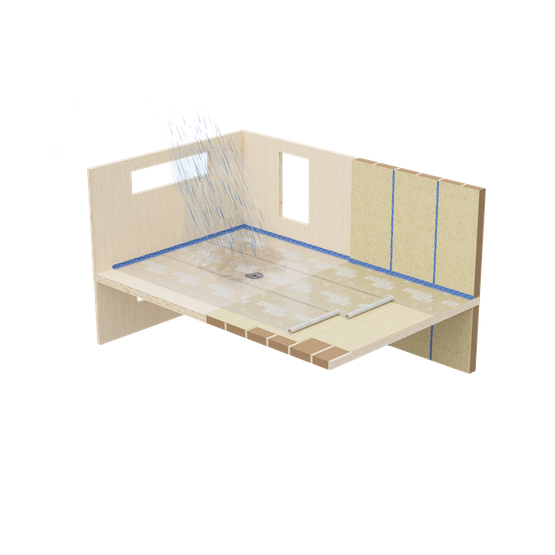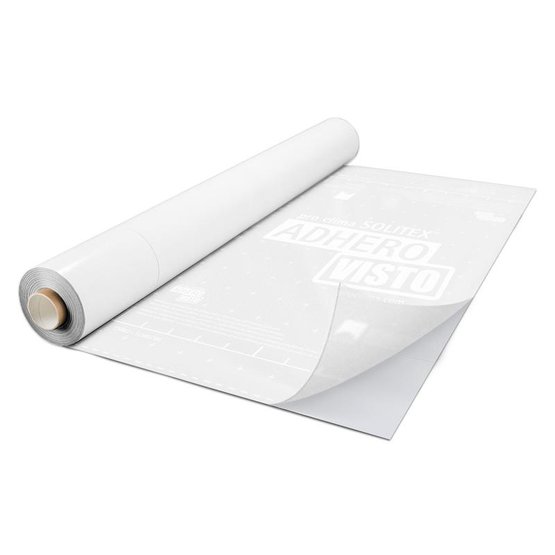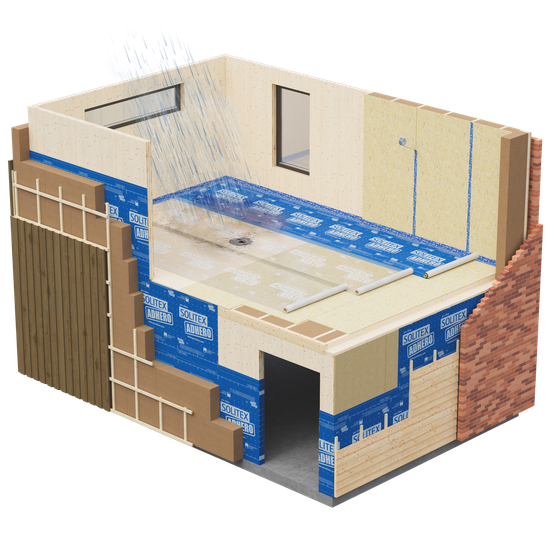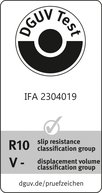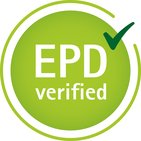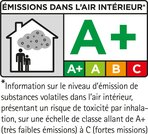Transparent Full-Surface Adhesive Membrane for Weather Protection
Advantages
- Protects the structure against weathering during the construction phase
- 42 days of outdoor exposure
- Preparation work is made easier: markings, connectors and penetrations on timber floors remain visible
- Safe working: anti-slip surface, even in wet conditions
- Water-resistant SOLID adhesive ensures adhesion to the substrate and within overlap areas
Areas of application
Temporary protection for floors during construction
Thanks to its full-surface adhesion and polyethylene functional film, this membrane provides temporary weathering-protection for trafficable intermediate floors on multi-storey CLT (cross-laminated timber) or wooden-frame buildings during the construction period.
Technical specs
| Material | |||
| Functional film | Polyethylene copolymer | ||
| Protective film | Polypropylene | ||
| Adhesive | Water-resistant SOLID adhesive | ||
| Release film | Silicone-coated PE film | ||
| Property | Regulation | Value | Regulation |
| Colour | Translucent | ||
| Surface weight | EN 1849-2 | 210 g/m² | EN 1849-2 |
| Thickness | EN 1849-2 | 0.35 mm | EN 1849-2 |
| Vapour resistance (MVTR) | ASTM E96 Procedure B | Depends on substrate | ASTM E96 Procedure B |
| Flammability index | AS 1530.2 | < 5 | AS 1530.2 |
| Slip resitance | DGUV Test | R10 / V ‑ | DGUV Test |
| Absorbency | AS/NZS 4201.6 | > 150 g/m² | AS/NZS 4201.6 |
| Water column | EN ISO 811 | 10 000 mm | EN ISO 811 |
| Resistance to water penetration | AS/NZS 4201.4 | Pass (> 100 mm) | AS/NZS 4201.4 |
| Air resistance | ISO 5636-5 | ≥ 0.1 MN·s/m³ | ISO 5636-5 |
| Type classification | NZ 2295:2006 | W4 | NZ 2295:2006 |
| Edge tear resistance MD/LD | TAPPI T470 | Depends on substrate | TAPPI T470 |
| Tensile strength MD/LD | ASTM D882 | Depends on substrate | ASTM D882 |
| Heat shrinkage @ 70°C MD/LD | ASTM D1204 | N/A (fully adhered membrane) | ASTM D1204 |
| Moisture shrinkage | AS/NZS 4201.3 | N/A (fully adhered membrane) | AS/NZS 4201.3 |
| Temperature resistance | EN 1109, EN 1296, EN 1297 | ‑40 °C to 80 °C | EN 1109, EN 1296, EN 1297 |


